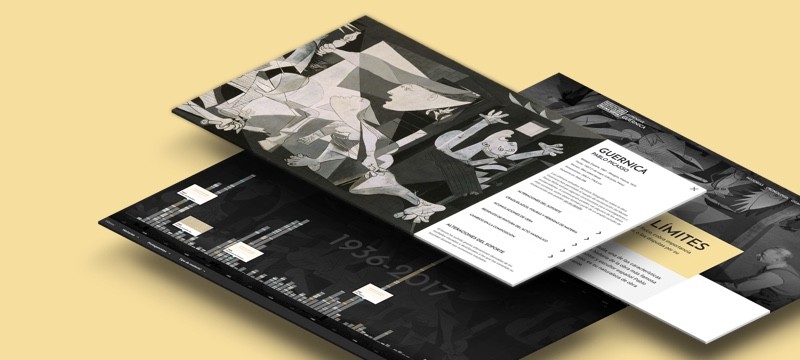Museo Nacional Centro de Arte Reina Sofía
The Museo Reina Sofía, an independent body under Spain’s Ministry of Culture, was founded in September 1986 as the Centro de Arte Reina Sofía, and acquired the status of national museum in September 1992. Its newly established museum programme proceeded at that time from nineteenth-century and twentieth-century works from the collection of the Museo Español de Arte Contemporáneo, an institution created in 1968. This first phase in the museum’s history was set in motion with the transfer of Guernica and its accompanying series of drawings and sketches, which entered its permanent collection.
After being remodelled and refurbished, the old Hospital de San Carlos, founded by order of Philip II, and extended during the reign of Charles III by the architects José de Hermosilla and Francisco Sabatini, remained in operation until 1965, before later becoming the site of the Centro de Arte Reina Sofía. As a national museum, from 1992 onwards its role and mission encompassed the research, conservation and dissemination of both its collection and contemporary art by way of temporary exhibitions. Due to issues of space and increased visitor attendance and activities, in 2005 the museum unveiled its new extension, designed by the architect Jean Nouvel.
The Museo’s Collection comprises over 21,000 works spanning the late nineteenth century to the present day. It builds a narrative rooted in the century’s problems, political crisis and social change, stretching across new languages that triggered avant-garde movements, particularly Cubism, Dadaism and Surrealism, arriving at the art made over the second half of the twentieth century, characterised by rupture, dystopia and paradigmatic changes, including for the artist, before reaching the early part of the 21st century. The Collection shines a spotlight on post-war Spanish art, contextualised and inserted inside the international milieu, opening out towards the practices, mediums and discourses today. The temporary exhibitions, public activities and mediation all work towards positioning at once, both locally and internationally, the Collection inside discourses of contemporary art and making the museum a place for public knowledge.
From the outset, the Royal Decree signed to create the Museo Reina Sofía in 1988 was linked to the transfer of Guernica from the Casón del Buen Retiro, igniting debate over the will of the artist, as well as the suitability and safety of the transfer for conservation reasons, which involved numerous figures ranging from Congress representatives to Picasso’s heirs. With María de Corral as director, the first museum project saw a central space administered for Picasso and Guernica, the painting embodying the start of a new political landscape in Spain and the modernisation of art culture and museum institutions. Finally, on 26 July 1992, Guernica entered the Museo Reina Sofía, where it remains a key piece in the arrangement and presentation of the Collection. The painting hangs in a setting devoted to wartime art, distinctly the propaganda and art represented in the Spanish Pavilion at the Paris World’s Fair of 1937, along with Guernica’s preparatory drawings, a maquette of the pavilion designed by Josep Lluís Sert and Luis Lacasa, models of Alexander Calder’s Mercury Fountain and Alberto Sánchez’s El pueblo español tiene un camino que conduce a una estrella (The Spanish People Have a Path that Leads to a Star), in addition to Joan Miró’s poster design for Aidez l’Espagne.




